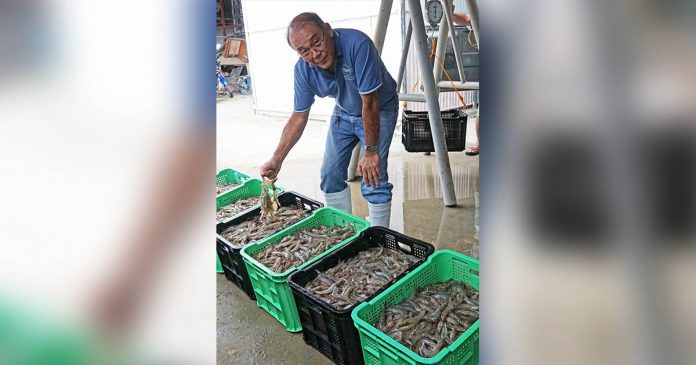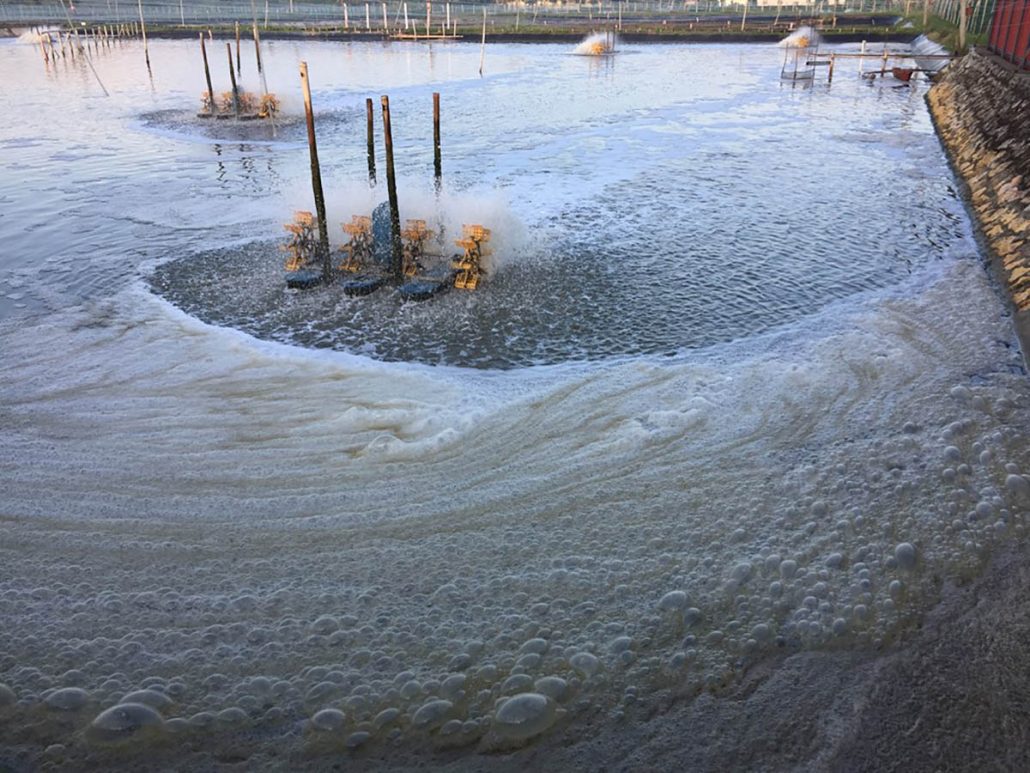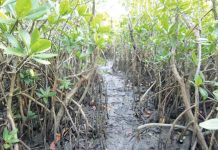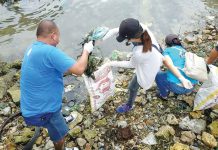
By Rossea Ledesma
BY RECYCLING excess nutrients that would otherwise have been released to the environment, a shrimp farm harvested almost 13 tons of shrimp worth P3.3 million after just over four months of culture.
Whiteleg shrimp (Litopenaeus vannamei) was harvested in portions beginning 81 days of culture until 132 days from just 10,449 square meters of old earthen ponds of the Southeast Asian Fisheries Development Center Aquaculture Department (SEAFDEC/AQD) in Dumangas, Iloilo.
“With this harvest, the profit gained was around P1.4 million with a selling price of P257 per kilogram and a return on investment of 172 percent,” said Erish Estante-Superio, associate researcher at SEAFDEC/AQD.
The farm used a biofloc culture system where pond water rich in shrimp waste and excess feeds is manipulated, instead of replaced, to promote the growth of various organisms which then become food for the shrimp.

“Being a closed system, nutrients needed by the cultured species like shrimps can be continuously recycled and reused, thereby reducing the need for feeding and decreasing costs,” added Estante-Superio who is also the study leader of the whiteleg shrimp culture project in a biofloc system.
The shrimp instead feed on biofloc which are aggregates of algae, bacteria, uneaten feeds, and excess nutrients present in the pond water.
“Aside from providing food, the use of the biofloc technology in aquaculture also helps maintain the water quality of the pond as well as prevent environment degradation since water discharge is minimal and water is reused,” added Victor Emmanuel Estilo, shrimp expert and station head of SEAFDEC/AQD’s Dumangas Brackishwater Station where the ponds are located.
SEAFDEC/AQD Chief Dan Baliao noted the 97 percent survival rate of the shrimp and good feed conversion ratio of 1.4 despite the culture run which was done during the rainy season.
“The result of our study can be helpful to shrimp farmers as they can continue to culture shrimp even during the rainy season without suffering losses brought about by diseases. We encourage shrimp farmers to adopt this technology to increase their production and profit,” said Baliao.
“The farmers can always approach us if they need assistance in setting up this technology in their farms. SEAFDEC/AQD is always willing to extend a helping hand for the betterment of the aquaculture industry,” he added.
Farming shrimp during rainy season
During the rainy season, shrimp farmers normally experience a higher prevalence of diseases such as that caused by the white spot syndrome virus (WSSV). Estante-Superio explained that heavy rains tend to lower the temperature and salinity of water in shrimp ponds while making it more acidic.
“Heavy rainfall can cause a crash in the microalgae population and an increase in heterotrophic bacteria due to the available nutrients from dead algal cells accumulating at the pond bottom,” she said.
A mass die-off of algae triggers bacteria to begin decomposing their dead cells, in the process consuming substantial amounts of oxygen in the water.
“This results in low dissolved oxygen in addition to low pH, salinity, and temperature creating an unfavorable environment, leading to stress and weak immune system in shrimp, thus making them susceptible to diseases,” she added.
However, studies have shown that shrimps grown in a biofloc system are less susceptible to disease since biofloc reduces the presence of potentially pathogenic bacteria.
“Having this information on hand, we conducted the study during the rainy season to demonstrate to shrimp farmers the effectiveness of biofloc technology in reducing disease occurrence during the rainy season,” said Estante-Superio.
SEAFDEC/AQD’s research team made sure to stock only healthy postlarvae purchased from an accredited hatchery and tested twice for the presence of common microorganisms that affect shrimp such as WSSV and Vibrio parahaemolyticus (causative agent of acute hepatopancreatic necrosis disease or AHPND) before stocking.
Pond water and shrimp were also monitored for disease occurrence. Pond water is tested twice weekly for the presence of luminous bacteria and V. parahaemolyticus while shrimp is checked once a week for the presence of WSSV and V. parahaemolyticus./PN







